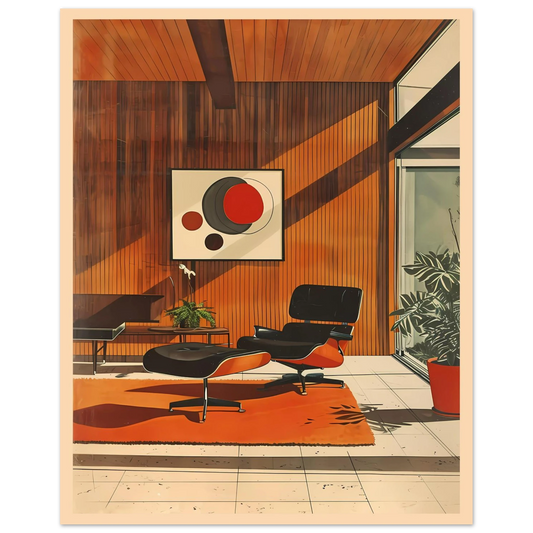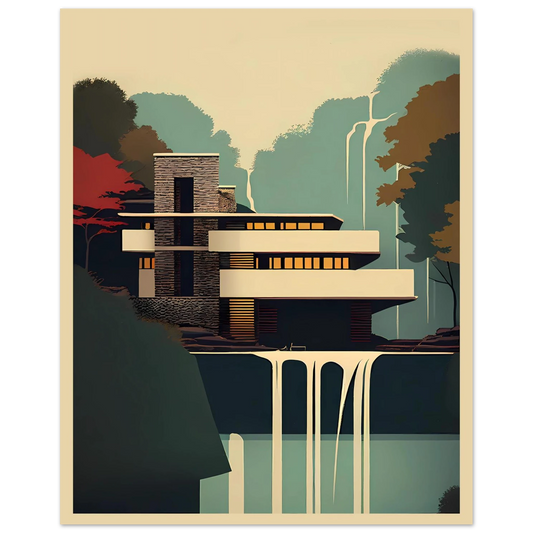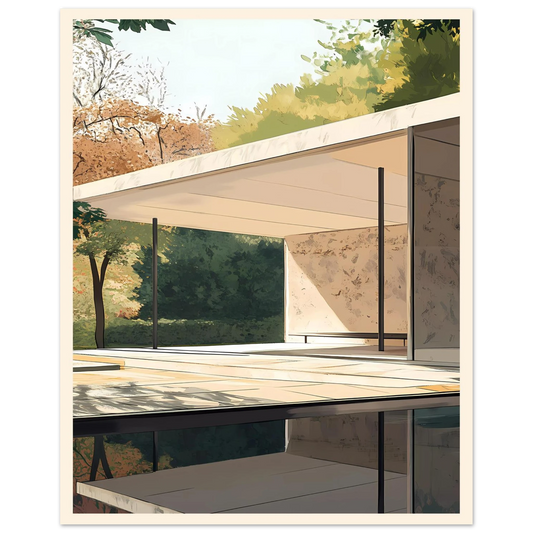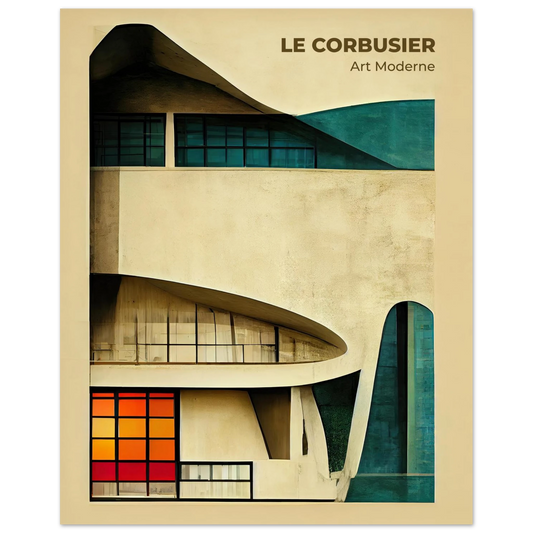Modernist Architecture and the Spirit of Modernism
Modernist architecture emerged as one of the most transformative movements of the 20th century, a bold departure from the ornamental traditions that had defined centuries of building design. It wasn’t just a new style; it was a philosophy. Modernism sought to align architecture with the rhythm of modern life, embracing progress, functionality, and honesty of materials.
At its heart, Modernism reflected the optimism of a world reshaped by industrialization and new technologies. Architects began to explore how steel, concrete, and glass could create lighter, more open spaces that connected people with their environment instead of enclosing them within it.

Pierre Koenig - The Stahl House - Wallart by Marco Viçoso
Function Over Ornament
“Form follows function” became the unofficial motto of Modernism. This simple phrase captured an entire way of thinking: that buildings should be designed for their purpose rather than decorated to impress. Instead of excessive ornamentation, modernist buildings celebrated clean lines, open floor plans, and geometric clarity.
This philosophy gave rise to minimalist designs that felt honest and unpretentious. Every element had a reason to exist. Windows were placed to maximize light and air. Structural components were left visible, emphasizing their beauty as part of the building’s integrity rather than hiding them behind facades.
The Masters of Modernism
The movement’s early pioneers reshaped the world’s skylines. Architects such as Le Corbusier, Walter Gropius, and Ludwig Mies van der Rohe championed the new aesthetic through ideas that fused art, engineering, and social vision.
Le Corbusier imagined homes as “machines for living,” spaces where functionality could support a better quality of life. Mies van der Rohe distilled architecture to its purest essence, creating elegant structures like the Farnsworth House and the Barcelona Pavilion, where glass and steel seem to dissolve the barrier between interior and exterior.
In the United States, Richard Neutra and Philip Johnson brought Modernism into domestic life, designing homes that felt at once futuristic and deeply human. Across Europe, the Bauhaus school became a cradle for modernist thought, influencing art, furniture, and industrial design for decades to come.

Villa Savoye - Le Corbusier
Modernism and the Human Experience
Although Modernism celebrated progress, it also remained deeply connected to human experience. The use of natural light, the flow of open spaces, and the interplay between structure and landscape all aimed to create harmony between people and their surroundings.
In places like Palm Springs, Modernism found a particularly vibrant expression. There, mid-century modern homes by architects such as Albert Frey, Donald Wexler, and William Krisel captured the optimism of postwar America. Their low-slung silhouettes, wide windows, and seamless indoor-outdoor transitions reflected the joy of desert living under endless sun.

Farnsworth House - Mies Van der Rohe

Glass House - Philip Johnson
The Lasting Influence of Modernist Design
Modernism never truly ended; it evolved. Its principles continue to shape how we design and inhabit spaces today. The rise of sustainable architecture, open-plan living, and minimalist interiors all trace their roots back to Modernist ideals.
Whether in the sweeping concrete of a Brutalist structure or the warmth of a mid-century home, Modernism endures because it speaks to timeless human values: clarity, purpose, and a sense of order in a complex world.
For collectors, designers, and architecture lovers, modernist architecture remains not just a visual style but a reflection of a century’s search for balance between innovation and beauty.
Explore the Modernism Collection
If this resonates with you, take a look at my Modernism Collection — a curated series of art prints inspired by the elegance and honesty of modernist architecture. Each piece captures the clean lines, warmth, and clarity that defined this movement.




